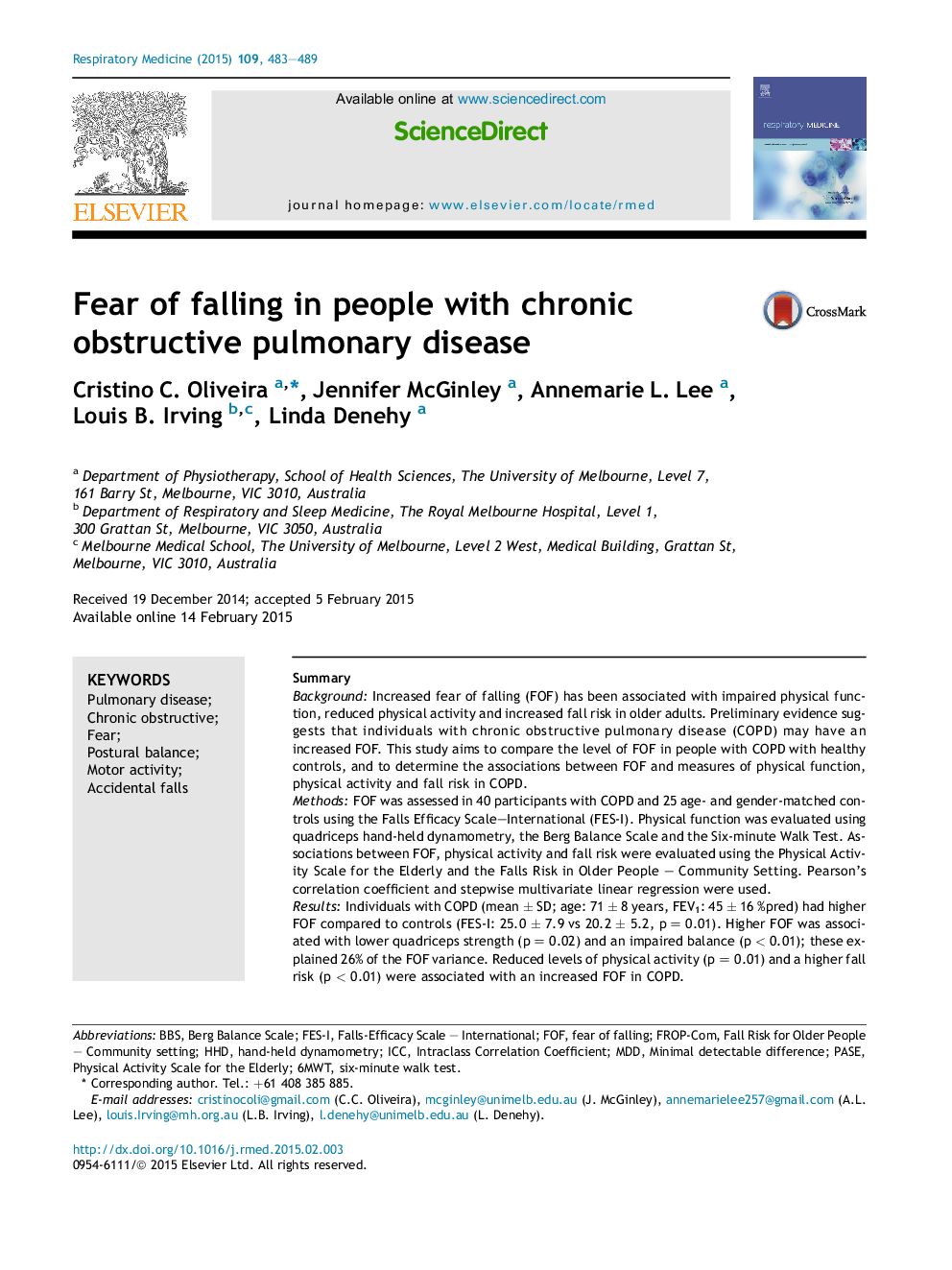| Article ID | Journal | Published Year | Pages | File Type |
|---|---|---|---|---|
| 6241503 | Respiratory Medicine | 2015 | 7 Pages |
SummaryBackgroundIncreased fear of falling (FOF) has been associated with impaired physical function, reduced physical activity and increased fall risk in older adults. Preliminary evidence suggests that individuals with chronic obstructive pulmonary disease (COPD) may have an increased FOF. This study aims to compare the level of FOF in people with COPD with healthy controls, and to determine the associations between FOF and measures of physical function, physical activity and fall risk in COPD.MethodsFOF was assessed in 40 participants with COPD and 25 age- and gender-matched controls using the Falls Efficacy Scale-International (FES-I). Physical function was evaluated using quadriceps hand-held dynamometry, the Berg Balance Scale and the Six-minute Walk Test. Associations between FOF, physical activity and fall risk were evaluated using the Physical Activity Scale for the Elderly and the Falls Risk in Older People - Community Setting. Pearson's correlation coefficient and stepwise multivariate linear regression were used.ResultsIndividuals with COPD (mean ± SD; age: 71 ± 8 years, FEV1: 45 ± 16 %pred) had higher FOF compared to controls (FES-I: 25.0 ± 7.9 vs 20.2 ± 5.2, p = 0.01). Higher FOF was associated with lower quadriceps strength (p = 0.02) and an impaired balance (p < 0.01); these explained 26% of the FOF variance. Reduced levels of physical activity (p = 0.01) and a higher fall risk (p < 0.01) were associated with an increased FOF in COPD.ConclusionPeople with COPD have a higher FOF compared to the healthy peers, which is related to lower quadriceps muscle strength, impaired balance, lower levels of physical activity and an increased fall risk.
